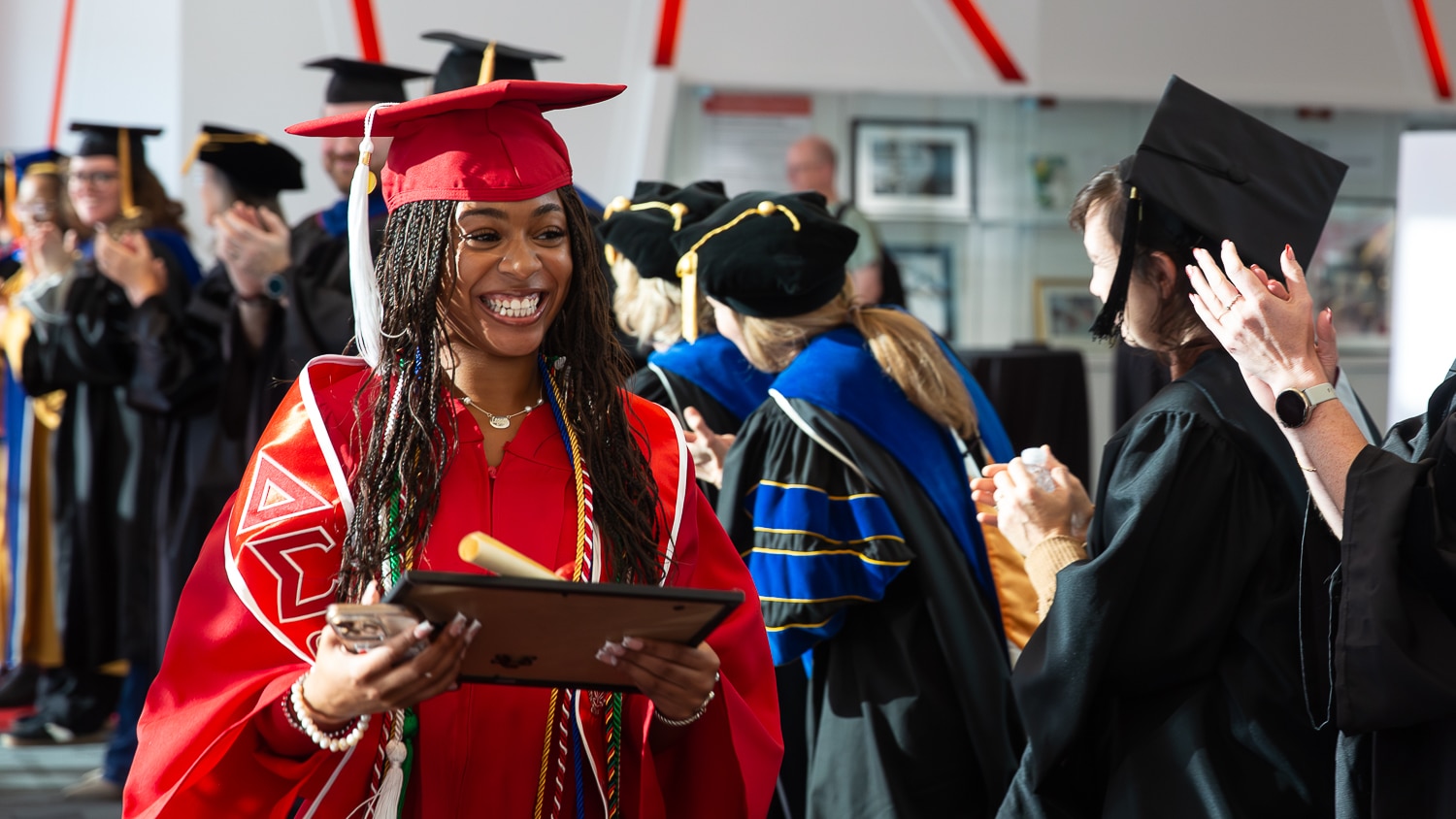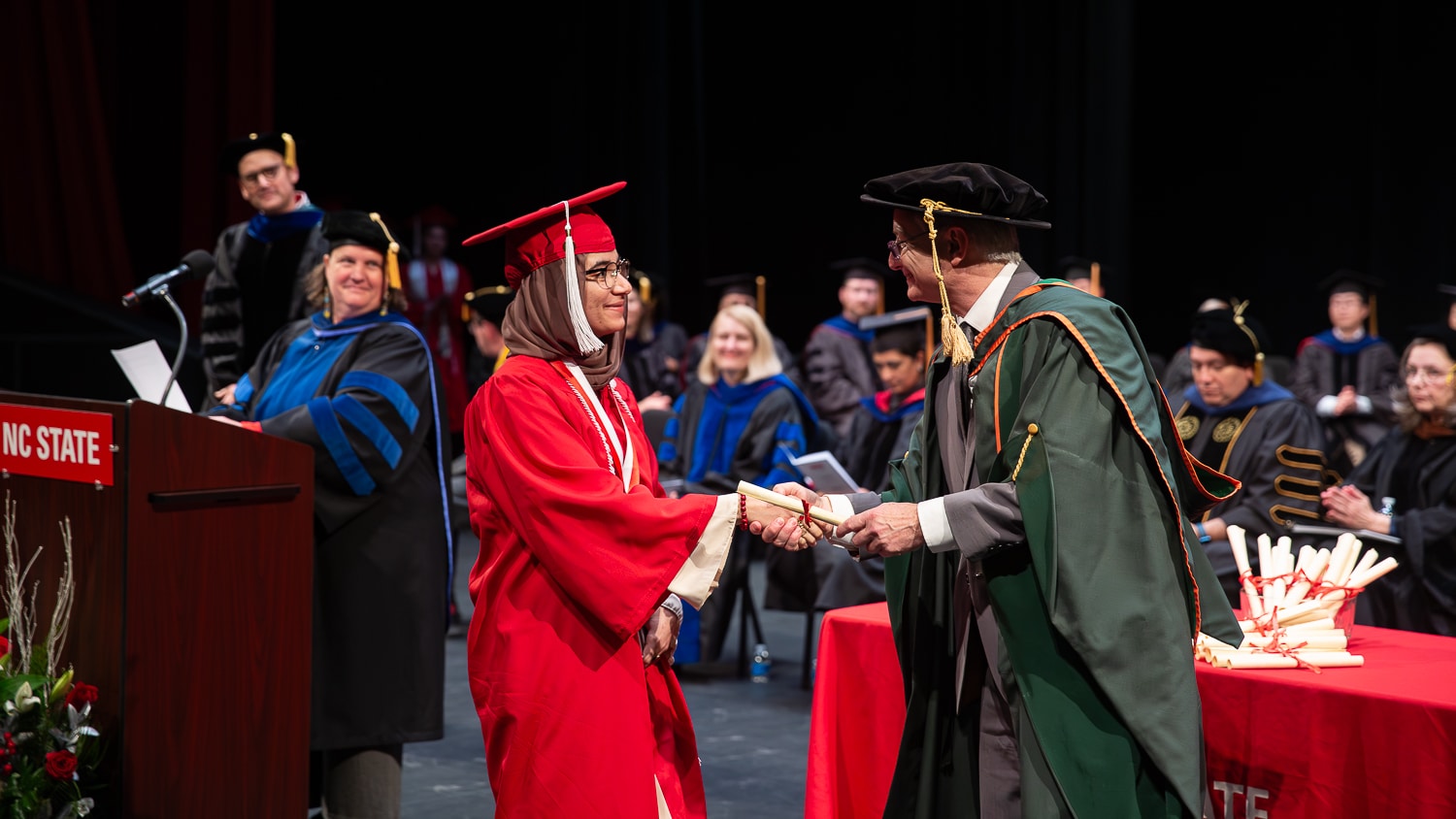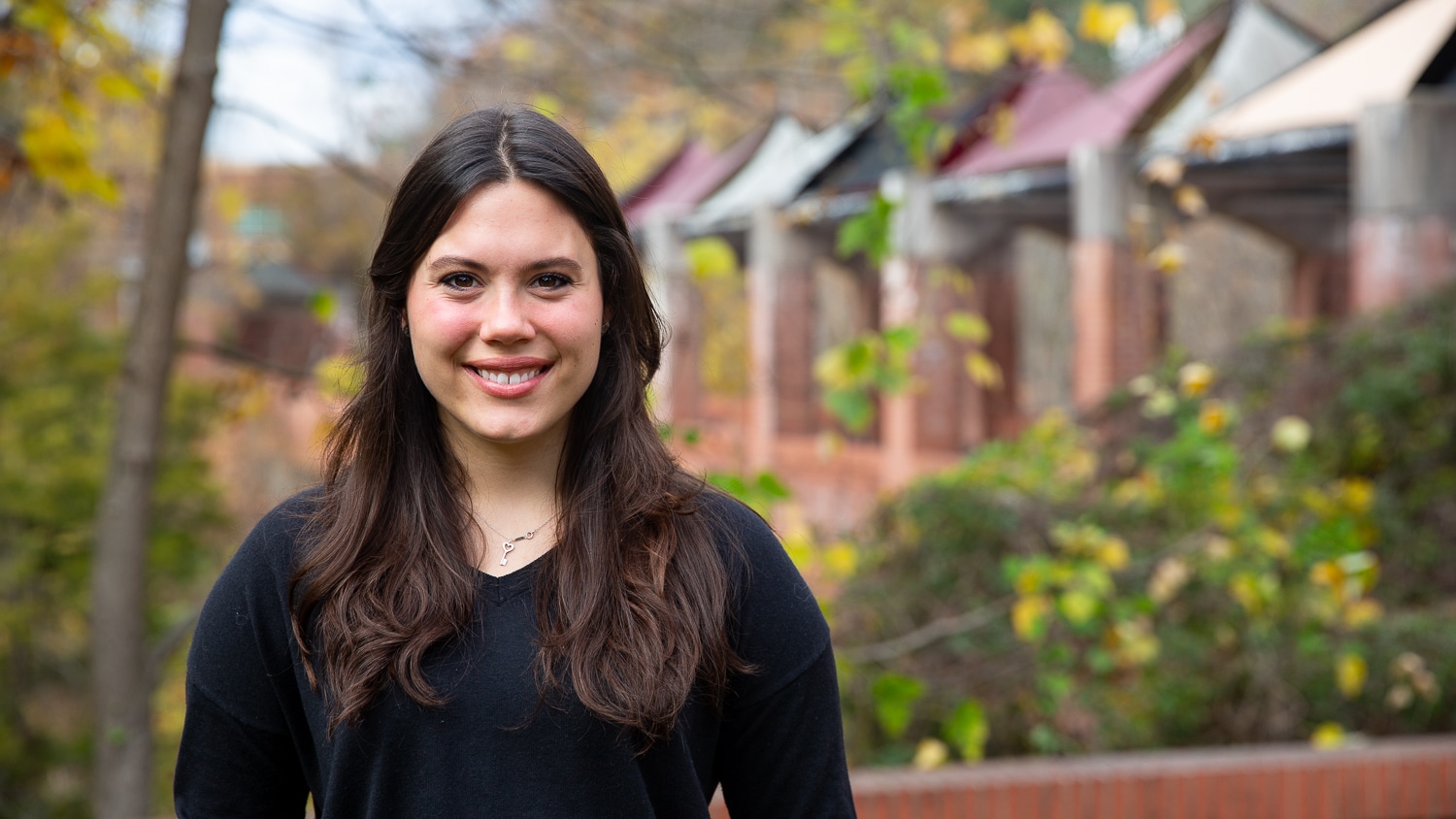Fashion and Textile Design Students Explore Technique and Talent in First-Year Studio
First-year fashion and textile design students begin their time at the Wilson College of Textiles with a year-long cohort studio experience.

Gouache paintings, watercolor motifs and colored pencil swatches fill the sketchbook pages of fashion and textile design students in the first-year studio at the Wilson College of Textiles.
Students in both the fashion design and textile design concentrations of the B.S. in fashion and textile design (FTD) program spend their first year as a cohort in a year-long studio course. During the fall semester, students learn foundational design principles and methods. This prepares them for the spring semester, when they expand upon these skills to design for a target consumer and product category.
Assistant Professor Janie Woodbridge and Associate Professor Anne Porterfield lead the first-year studio experience.
“We talk a lot about color theory, design theory and other subjects like that. It’s a foundational design class. Projects might end up being a garment or a textile, but we’re teaching them on the foundation of art,” Woodbridge explains.
The cohort experience not only encourages community and fosters collaboration but also teaches students how to work in a shared space, receive feedback and manage group projects. All FTD students take combined studio courses in their first year before splitting off into more specific pathways and studios based on their concentration.
“We like bringing the fashion design students and the textile design students together because we feel like that gives each concentration more perspective on how their work fits into the larger textiles complex,” Porterfield says. “Community is also an important component of it, and I think that is really seen in how our students continue to keep in touch and work with each other after graduation.”
Laying the foundations
The first semester’s focus on traditional visual art teaches students foundational principles. Projects focus on color, line and form. One project, for example, challenges students to replicate images of textiles in various media.
Charlee Abbott, a fashion design student from Oregon, heard about the Wilson College from her high school counselor. She then attended the Summer Textile Exploration Program where she completed a fashion design project which she included in her portfolio application.

Though she was most familiar with sewing, she has enjoyed learning and practicing visual art concepts in studio.
“We’ve been doing a lot of 2D work with gouache, watercolors, markers and colored pencils to replicate textile images,” Abbott says. “I didn’t expect as much basic work with art and design. I’ve learned a lot and I think it’ll translate into design and sewing.”
Reflecting on their first semester
The rigor and commitment of studio classes often prove challenging for first-year students. Along with technical skills, students learn the importance of time and project management.
“There is a learning curve for students. We really focus on the process and we want them to be able to document everything,” Porterfield says. “It’s different, but they generally take that on as a welcome challenge because they have chosen to be here and they want to be successful. Sometimes they have to just adjust their thinking a little bit.”

Along with giving her fond memories of learning how to translate inspiration to motifs, spending late nights with her cohort in the studio and entering design contests for a bit of friendly competition, senior textile design student Amanda Cease says her time in the first-year studio experience set her up for success.
“I developed the skills necessary to present my work effectively: both orally and visually. I was also exposed to influential artists and historical textile design trends, which continue to inspire my work to this day,” she explains. “Being introduced to different computer-aided design programs during my first year made it easier to work with these softwares at a more complex level later on.”
Looking forward, first-year fashion design student Andrea Castillo is excited to continue studio and lab work over the next few years.
“Balancing classes together is challenging but I enjoy it. Every day is very different in studio and I really like how this class lets you have some freedom.”
With a solid foundation of new skills and techniques, students can carry a sense of confidence and pride into the upcoming years of studio and coursework.
“I really see them gaining confidence and competence,” Woodbridge says. “In the very beginning of the semester, there are a lot of questions, and they want to hear a lot of feedback from us. Then, towards the end of the semester, there are a lot of times where Dr. Porterfield and I are like, ‘They don’t need us anymore!’ I think that’s neat. I love seeing the confidence and ownership of themselves as designers and people.”



- Categories:


